Six Castles You Can Visit in the United States
You don’t have to travel to Europe to see turrets, gate houses and other architectural features reminiscent of the Middle Ages
/https://tf-cmsv2-smithsonianmag-media.s3.amazonaws.com/filer/99/1e/991e6657-85e1-430a-8aad-5b24e4755485/hearst_castle.jpg)
You don’t have to be royalty to visit a castle. Here in the United States numerous castles are open for exploration, and while they may not date back to Medieval times, their elaborate architectural characteristics—turrets, moats, gate houses, drawbridges and other features commonly associated with castles found in England and elsewhere in Europe—are equally impressive. One even has a fire-breathing dragon!
Hearst Castle, San Simeon, California
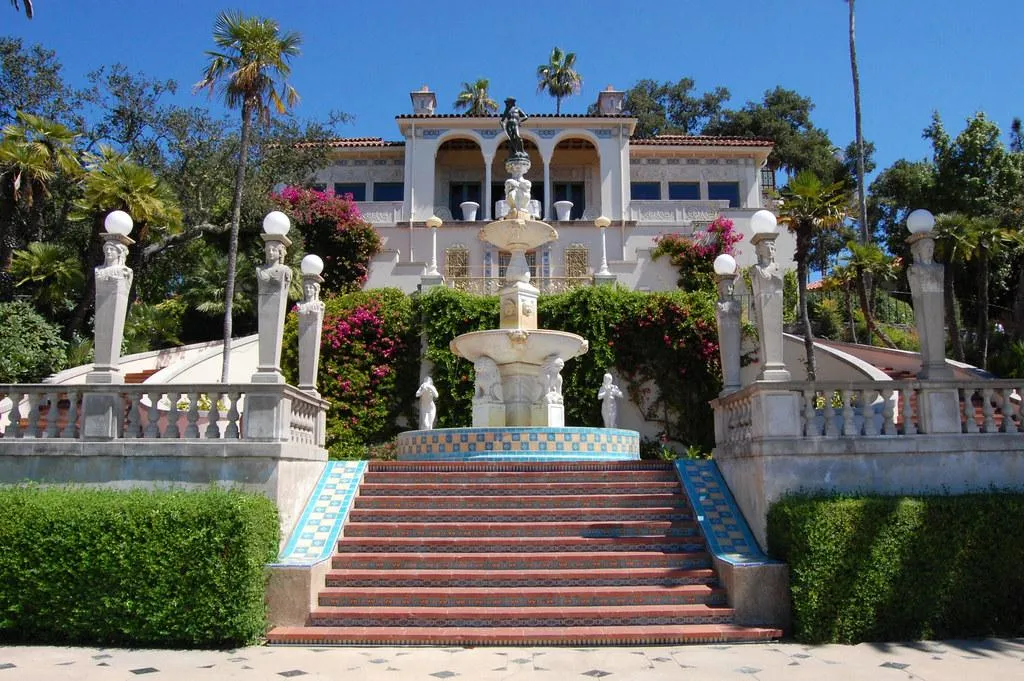
From 1919 to 1947, William Randolph Hearst and architect Julia Morgan built a castle fit for a king—or in this case, a publishing magnate. Located on 250,000 acres of land equidistant from San Francisco and Los Angeles, the idea for Hearst Castle began as a “modest dwelling” but eventually grew to a multi-million-dollar project that included multiple buildings, including Casa Grande, a palatial home featuring 38 bedrooms, 42, bathrooms and 14 sitting rooms. But perhaps the most iconic parts of the property are the two swimming pools. The first, Neptune Pool, stretches 104 feet in length and holds 345,000 gallons of water while the indoor Roman Pool features intricate mosaics inspired by ancient Roman baths. The castle now hosts a variety of themed tours, including evening tours where visitors an experience the property during twilight.
Biltmore Estate, Asheville, North Carolina
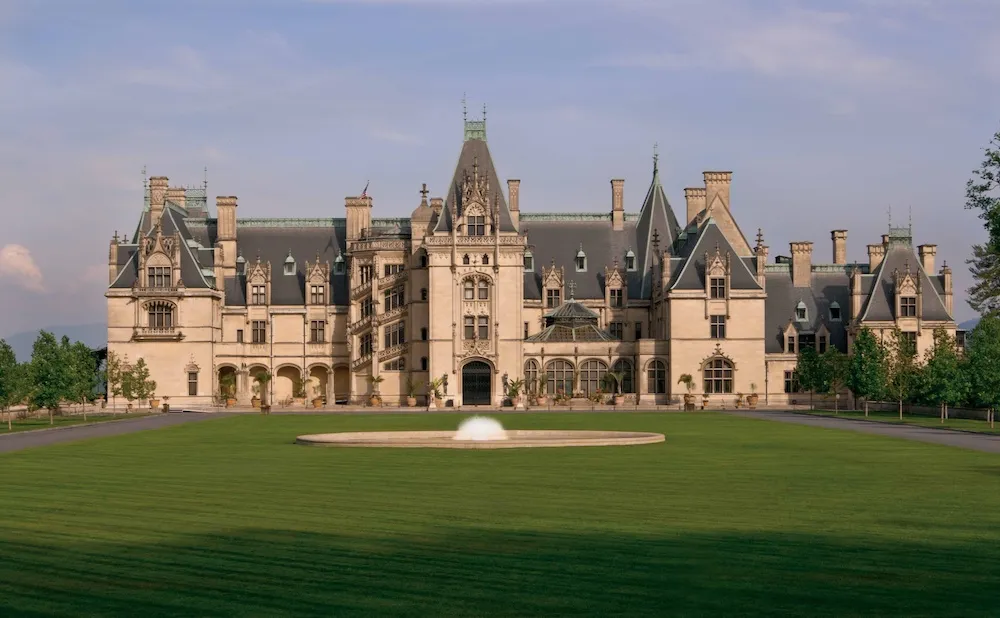
It’s easy to see why this is considered one of the most iconic estates in the United States. With a square footage measuring more than 178,000 square feet, the Biltmore Estate is considered the largest privately owned home in the United States. Construction of the sprawling chateau was completed in 1895 for then-owner George Washington Vanderbilt II, a successful art collector and an heir to the prominent Vanderbilt family. Designed by architect Richard Morris Hunt, the finished estate contains 250 rooms, 43 bathrooms and 65 fireplaces, as well as prominently appointed turrets and pitched roofs, two features common in French Renaissance architecture, which Hunt looked to for inspiration. Landscape architect Frederick Law Olmstead designed the property’s collection of gardens (you may recognize his name as the designer of New York City’s Central Park and Prospect Park). More than a century later, the estate is still abuzz with activity and hosts a calendar of events that includes self-guided and audio tours, carriage rides around the property, exhibitions (currently on view is “Downton Abbey: The Exhibition”), wine tastings at the onsite winery and more.
Iolani Palace, Honolulu, Hawaii
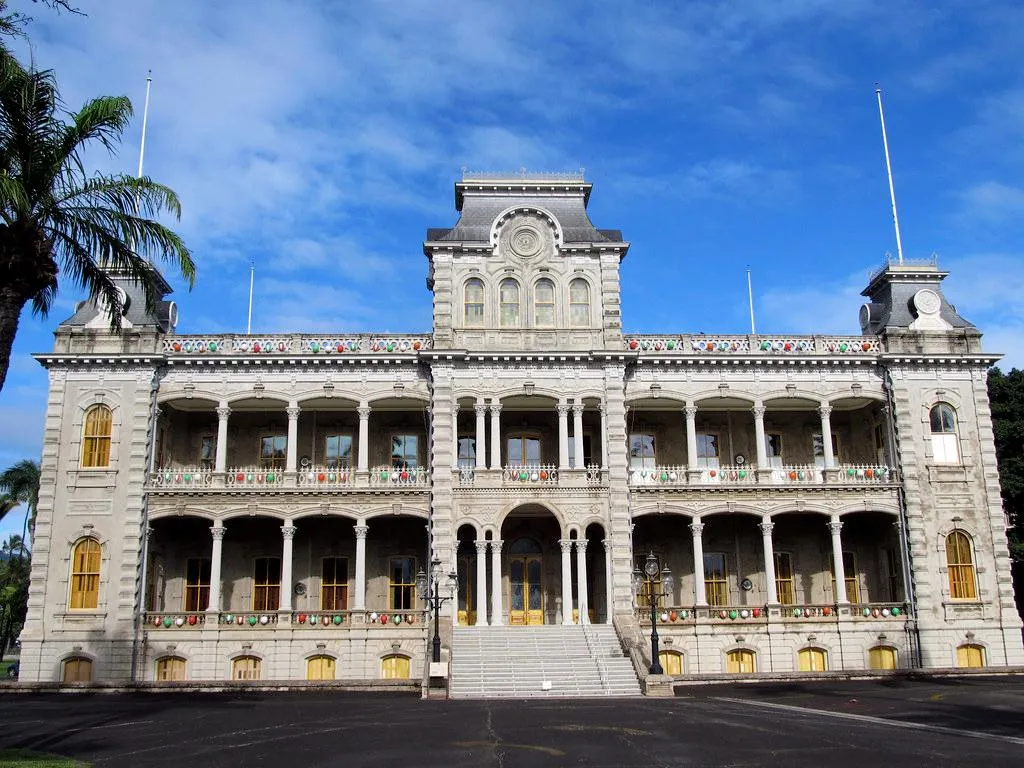
Long before Hawaii became the 50th state, it was ruled by King Kalakaua and later his sister, Queen Lili'uokalani, and Iolani Palace served as the monarchy’s home base. Completed in 1879, the 37,100-square-foot palace is noteworthy for its unique style of architecture, known as American Florentine, and considered the only example of its kind in the world, combining the square symmetric style of Italian Renaissance architecture popular in Italy with Hawaiian touches, including the incorporation of local koa wood in the construction. After the overthrow of the monarchy in 1893, the sprawling property served as a government building for some 80 years. Then, beginning in the 1970s, Iolani Palace was restored to its royal glory, with looted furnishings from Queen Lili'uokalani's era returning to their rightful place in recent years. Now a National Historic Landmark and a museum, the palace offers both guided and self-led audio tours, including visits to the Imprisonment Room, where Queen Lili'uokalani served an eight-month imprisonment for allegedly having “knowledge of a counterrevolutionary attempt” during her reign, and the Throne Room, a gold-and-crimson-adorned room that showcases the monarchy’s two thrones.
Bishop Castle, Rye, Colorado
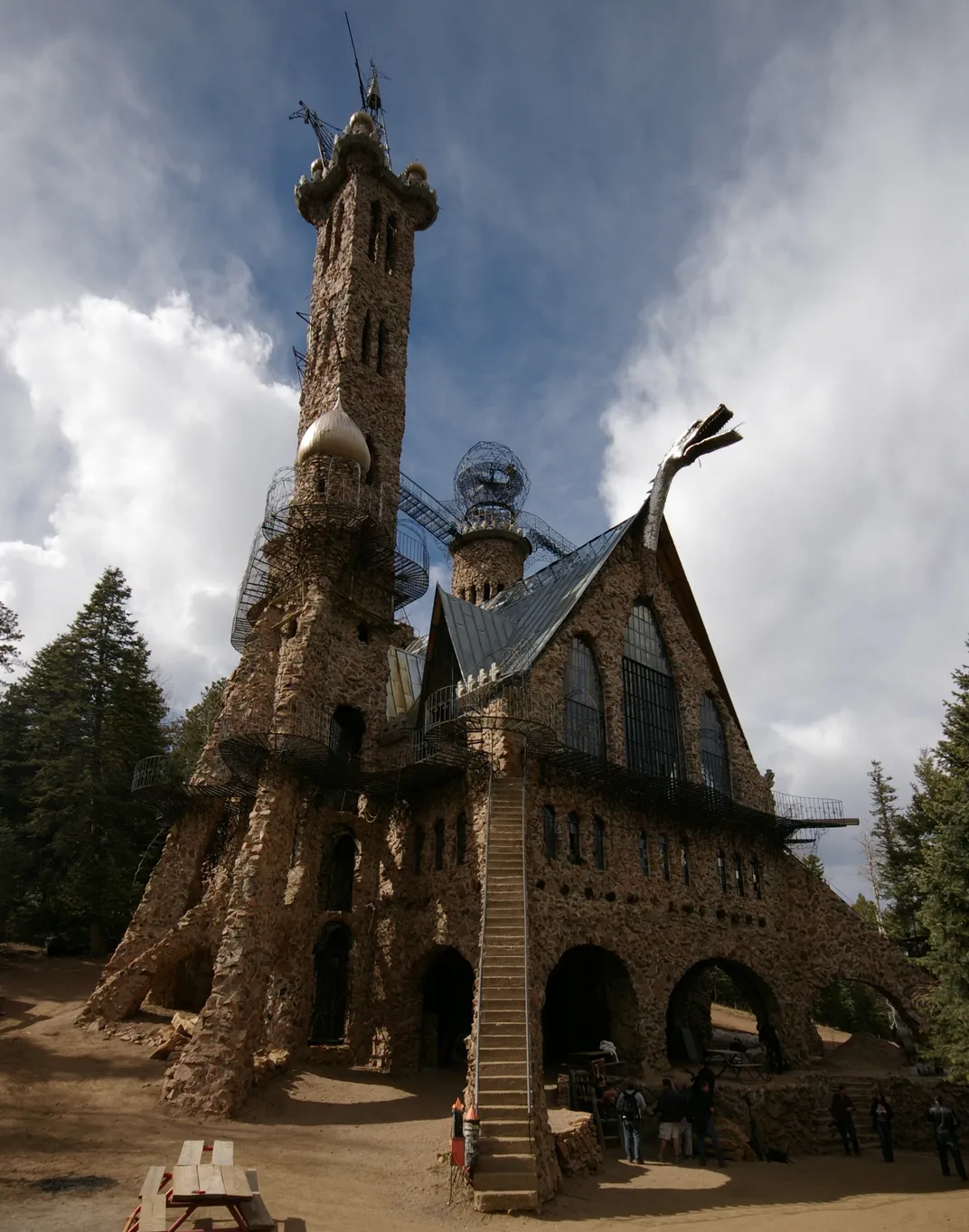
When Jim Bishop began building a summer cottage in 1969, on a two-and-a-half acre plot of forested land he purchased ten years earlier at the age of 15, little did he know he would wind up building a castle. With the help of his father, Willard, the pair gathered nearby rocks and, without using a single blueprint, set out to create a stone cottage of epic proportions. By 1995, the massive structure towered 165 feet in height, nearly as tall as a 16-story building. Today, the stone castle draws crowds from around the world to marvel at the creation. Bishop’s creativity can be seen throughout the property. How many castles have a fire-breathing dragon hovering 80 feet in the air constructed of repurposed stainless-steel warming plates, after all? Despite a number of setbacks, including a cancer diagnosis several years back, Bishop, now in his 70s, continues to greet visitors to Bishop Castle looking to explore its stained-glass ballroom and scale the castle’s spiraling staircase to reach the top of a turret that offers sweeping views in every direction far above the tree line.
Smithsonian Castle, Washington, D.C.
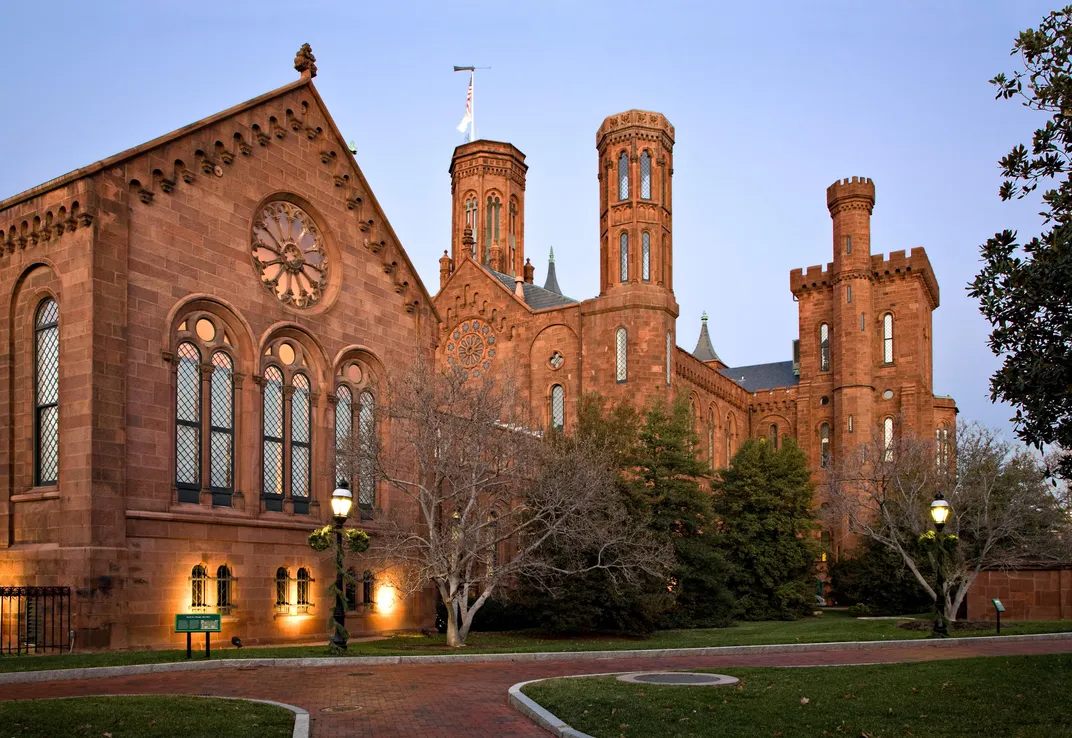
A number of iconic buildings border the National Mall, but one sticks out from the rest. Completed in 1855, the Smithsonian Institution Building (often called the Castle) serves as home base for the Smithsonian Institution and houses its information center. The Castle—constructed in the Norman style of architecture popular in the 12th century using red sandstone quarried from Seneca Creek, Maryland— is the work of architect James Renwick, Jr., who also designed St. Patrick’s Cathedral in New York City and Renwick Gallery in Washington, D.C. Renwick's original cardboard model of the Castle is on display inside the building. Visitors can also pay their respects to James Smithson, the British scientist who bequeathed his estate to the United States for the establishment of an institution dedicated to "the increase and diffusion of knowledge," at his crypt near the Castle's north entrance.
Bannerman Castle, Beacon, New York
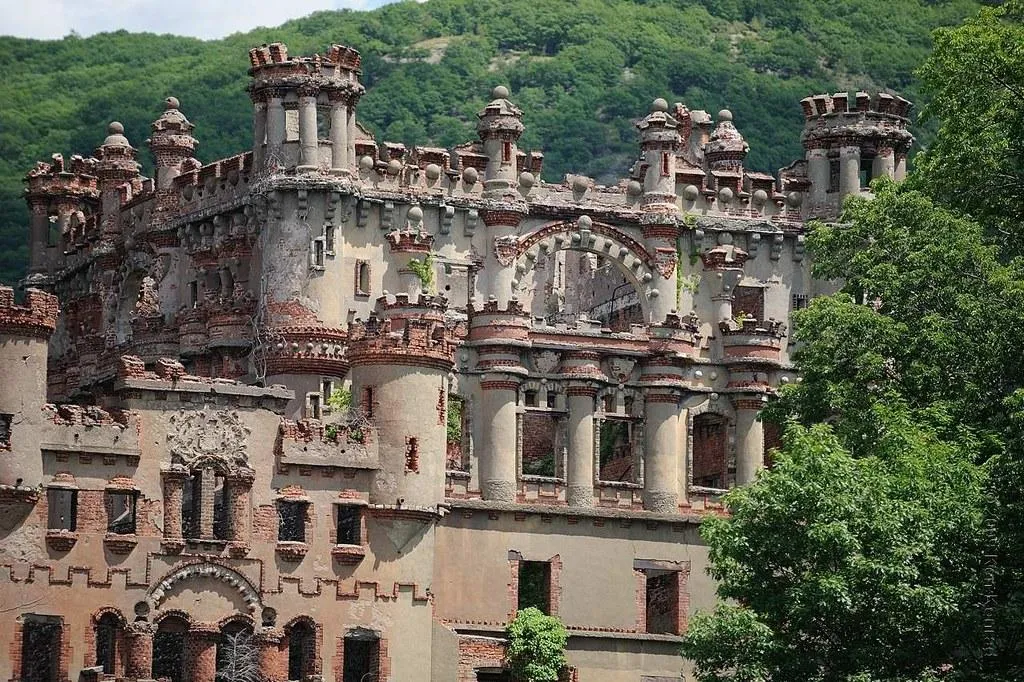
As a successful munitions dealer, businessman Francis Bannerman VI needed adequate space to store the bounty of equipment used during the Spanish-American War of 1898 that he had purchased at military auctions. During a canoeing trip in 1900, he happened upon just the spot to store his vast collection: Pollepol Island. Located roughly 60 miles north of New York City on the Hudson River, the island’s seclusion and distance from the city made it an appealing location for a storage facility to house cannons, boxes of gun powder, uniforms, scrap metal and other military paraphernalia. However, while much of the building did reach completion, construction of Bannerman Castle was abandoned upon Bannerman’s death in 1918. An explosion in 1920 destroyed the island’s powder house, leaving behind structural damage to the castle that can still be seen today. Over time, much of the remaining structure has crumbled due to the passage of time and weather, but the castle’s side wall still proudly proclaims “Bannerman’s Island Arsenal.” Kayak and guided walking tours of the island remain popular activities for city dwellers looking for an urban escape.